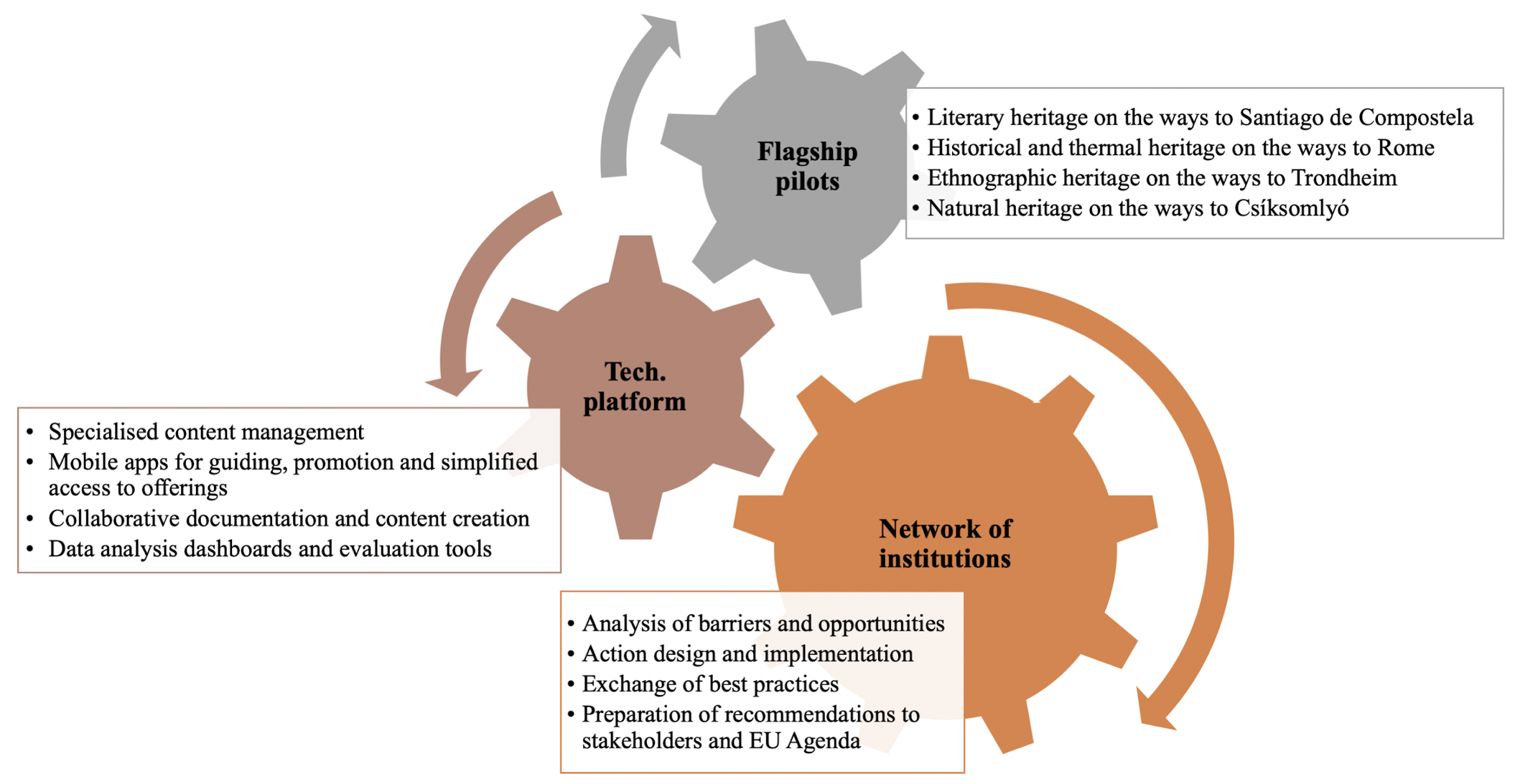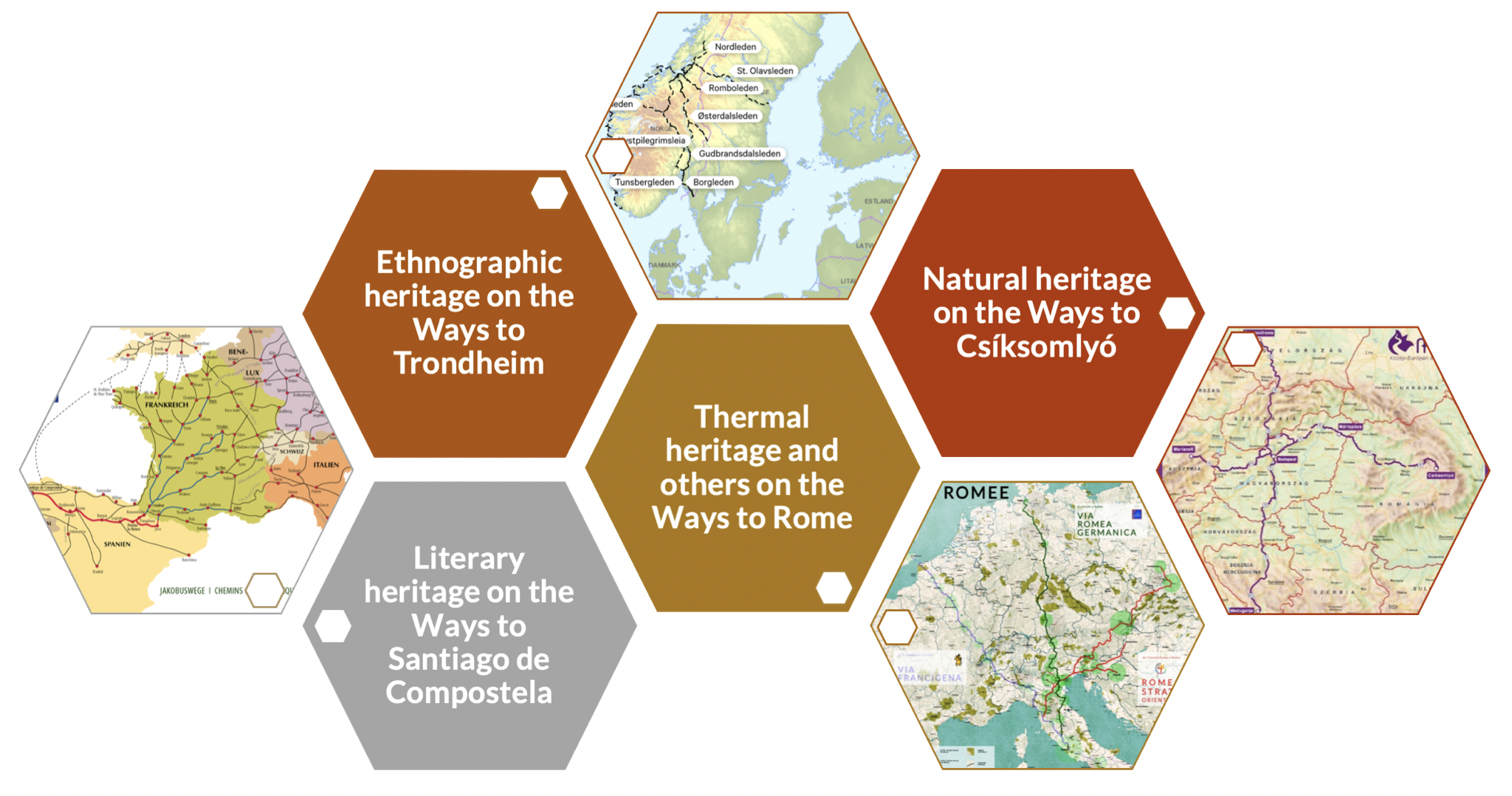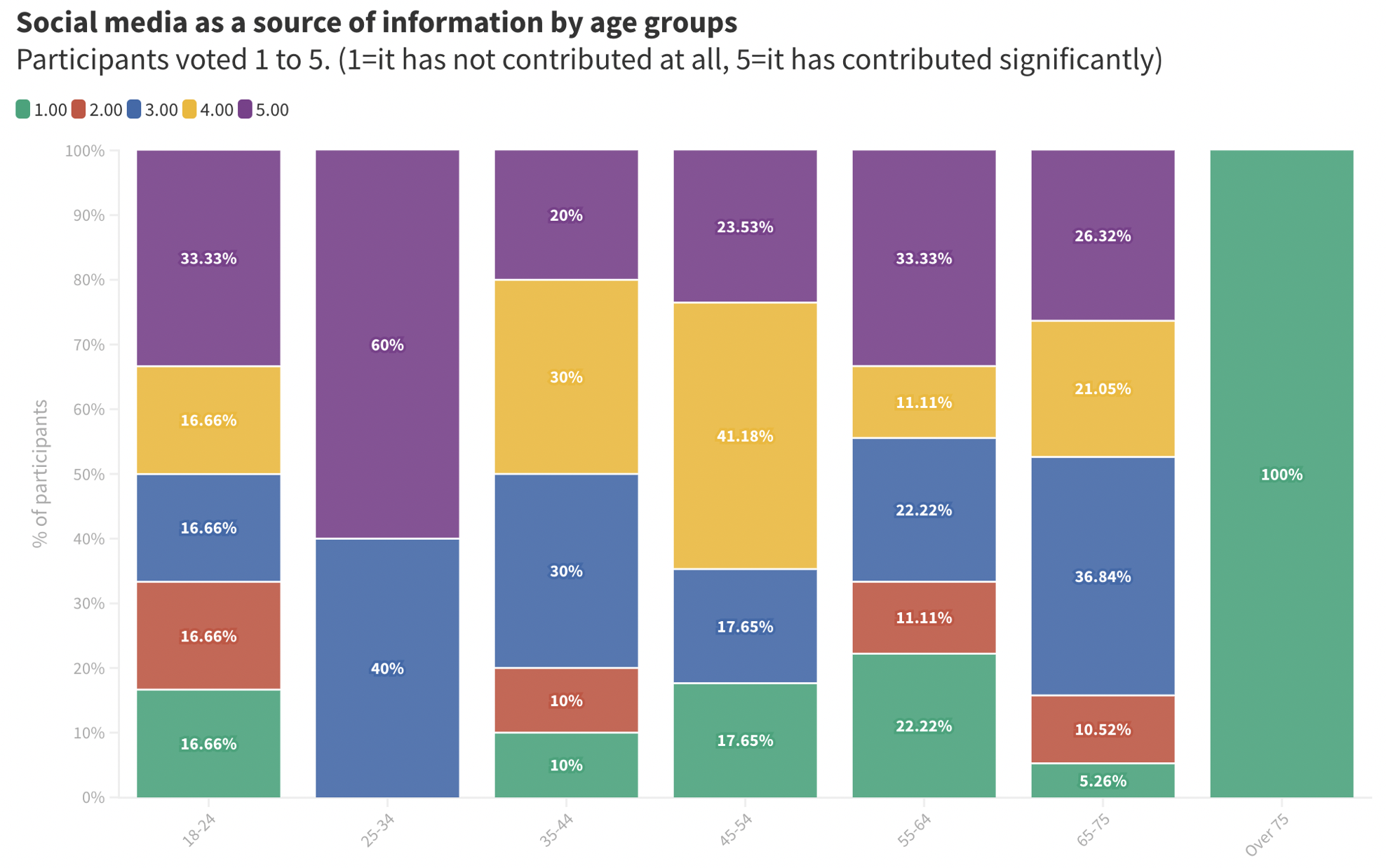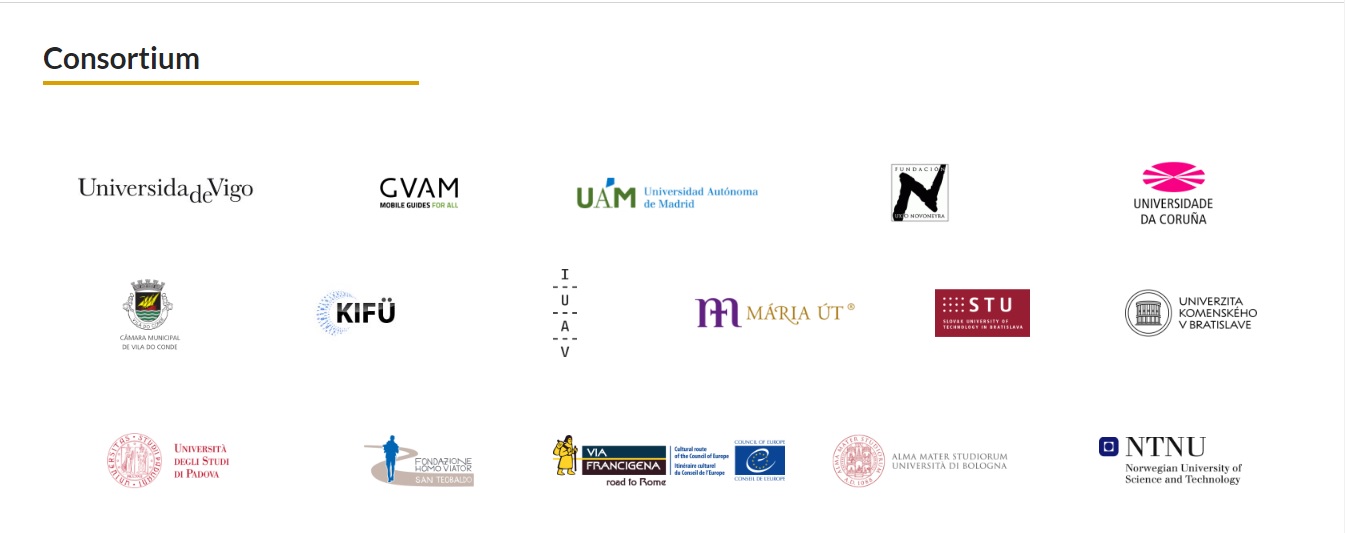The Horizon 2020 project rurAllure
Studying pilgrimage as slow tourism, territorial development, social cohesion
Martín López Nores, José Juan Pazos Arias, Susana Reboreda Morillo, and Óscar Penín Romero
Abstract

Introduction
A pilgrimage to religious and spiritual sites is a timeless tradition that transcends cultures and religions. It involves embarking on a journey, which often covers long distances, and reaches destinations of great significance. In recent years, this practice has gained a renewed interest, not only from a spiritual perspective but also from the standpoint of tourism and rural development, with remarkable implications from the economic, social, and cultural dimensions (Azevedo, 2021). Europe, in particular, boasts numerous worship places such as Santiago de Compostela (Spain) and Rome (Italy), Trondheim (Norway), Csíksomlyó/Șumuleu Ciuc (Romania), Częstochowa (Poland), Lindau and Trier (Germany), Lourdes and Mont Saint-Michel (France), Assisi (Italy), etc. The growth experienced since the 1990s with the revival of the Way of Saint James / Camino de Santiago has stimulated initiatives to consolidate pilgrimage routes all over the continent (Moscarelli 2021; Liro 2020).
In terms of economic impact, a pilgrimage has the potential to generate significant benefits for both pilgrims and local communities along the routes. As individuals undertake their spiritual quests, they require various facilities such as accommodation, food, transportation, and guides. Local businesses catering to these needs experienced an increase of demand, leading to new job creation and income generation. This surge in economic activity helps diversifying rural economies, reducing dependency on agriculture and creating alternative livelihood opportunities (Hilpert, 2018). Furthermore, the pilgrimage routes often traverse rural landscapes, allowing pilgrims to engage with local crafts, products, and traditions. This interaction stimulates local entrepreneurship, encourages the production of handicrafts, and promotes the sale of regional goods. The infusion of tourism revenue into these communities facilitates infrastructure development, enhances public services, and improves the overall quality of life for the residents of the area.
With regard to social impact, a pilgrimage fosters a sense of community and connection among individuals from diverse backgrounds. As pilgrims embark on their journey, they often form bonds with fellow travelers, engaging in conversations, sharing stories, and supporting one another along the way. These communal experiences create opportunities for intercultural exchanges and promote a sense of unity beyond religious or spiritual affiliations. Moreover, the convergence of pilgrims in rural areas allows for meaningful interactions between visitors and locals. These encounters facilitate cross-cultural understanding, challenge stereotypes, and bridge gaps between urban and rural populations (Notarstefano & Gristina, 2021). Such interactions can lead to a greater appreciation for the rural way of life and cultural heritage, helping to preserve local traditions and customs that might otherwise fade away (Mariotti, Camerada, Lampreu, Carrus 2021).
Pilgrimage routes, traditionally centered around religious and spiritual sites, often traverse rural landscapes that have been overlooked by mainstream tourism (Trono, Castronuovo 2021). As foot pilgrims make their way through these regions, they can contribute to the revival and revitalization of rural areas. Investments in infrastructure, such as lodging, dining, and public facilities, are needed to accommodate the growing number of visitors. This, in turn, encourages the growth of local businesses and stimulates the development of tourism-related services. The possibilities extend beyond economic factors, though. Pilgrimage routes provide an impetus for environmental conservation, as pristine landscapes and natural resources become focal points of the journey. Communities are motivated to protect their surroundings, preserving biodiversity and adopting sustainable practices to ensure the long-term viability of their regions. This emphasis on environmental stewardship not only benefits the pilgrimage experience but also safeguards the natural beauty and resources for future generations.
The Horizon 2020 project rurAllure: Motivation and main
The rurAllure project started to take shape in 2019, aiming to assess the potential impact of the pilgrimage phenomenon for rural development as explained above. Specifically, its motivation built upon the fact that, even if some pilgrimage routes are traversed by thousands every year, their impact is almost exclusively perceived in the places located directly on the paths, rarely permeating into the surrounding rural areas. Thus, entire provinces and regions of a predominantly rural nature – which are facing significant economic and demographic challenges all over Europe – become passive witnesses of the flows of pilgrims, even if they could add much content and value to the experiences. The opportunity for the project was reinforced by the aim to set the basis for rural communities to develop relevant and cohesive tourist products that might help facing the economic challenges arising with the COVID-19 crisis, considering that the EU should put strong focus in the future into domestic tourism and well as outdoor activities.
The goal of rurAllure, then, was to study ways to overcome the aforementioned situation through the allure of the cultural heritage found in the rural environment, and thus unleash the full potential of pilgrimage as a sustainable phenomenon. The Consortium saw opportunities in the fact that pilgrimage trips are usually planned with some flexibility regarding dates, distances travelled in successive journeys, places to rest, etc. Many pilgrims are amenable to serendipitous findings, too. This makes pilgrimage different from other types of cultural and touristic experiences, opening possibilities to increase the numbers of visitors in less-known heritage sites by (1) assembling meaningful cultural experiences with resources found in the rural environment; (2) mobilizing transportation, accommodation and dining resources; (3) offering the whole packs to the pilgrims through tailor-made means of promotion.
The intended effect was that some pilgrims would decide to take a break or a detour, and spend some time in a nearby town or village. By designing, implementing and testing technological tools and promotional strategies, the project sought to generalize such effect and, thereby, contribute to generate economic activity and also reinforcing a more diversified employment, to help preserve cultural heritage at risk (professions, customs, rural architecture, art and music, etc.) as well as to fight the rural exodus that is leading to a worrying spiral of loss of population and services.
The key concept put forward by rurAllure was to initiate a network of cultural institutions (museums, libraries, natural heritage sites, civil associations, etc.) that could benefit from the flows of people along pilgrimage routes nearby. Those institutions would work together towards the creation of multimedia contents to be offered to the pilgrims before, during and after their travels, and towards the design of means of promotion suited to the specifics of the region. Their collaboration would be facilitated by a technological platform with specialized content management facilities, as well as mobile apps that would cohesively present the heritage of the regions traversed over several days or weeks, featuring functionalities to (i) discover the most interesting resources and experiences for each individual or group; (ii) facilitate transportation to the towns and villages and, if needed, back to the main route; (iii) find suitable accommodation and dining possibilities in the rural environment.
The goals of rurAllure were stated to the European Commission as follows:
♦1. To establish a network of institutions to work on the promotion of cultural venues and heritage sites from the rural environments of Europe, in the vicinity of pilgrimage routes.
♦2. To develop studies from historical, cultural, sociological and economic perspectives, to understand and exploit the opportunities linked to the promotion of rural heritage as an added value to enrich the pilgrimage experiences.
♦3. To analyze the role that urban cultural and touristic institutions can play in the network, deriving visitors to the nearby rural environment.
♦4. To assess the strategies and recommendations derived from the aforementioned studies in pilot studies, conducted in regions of Europe traversed by different transnational pilgrimage routes, and focusing on different facets of cultural heritage relevant to regional development.
♦5. To create a comprehensive geolocative open database and an interactive map of European rural venues and heritage sites, in different levels of proximity to the main pilgrimage paths, and a directory of relevant stakeholders active in the promotion of culture and tourism: public authorities, tourism stakeholders, cultural and creative sectors, etc.
♦6. To exchange best practices and lessons learnt in the pilots all over Europe, by publishing reports on strategies and results, and by organizing events to inform regional, national and international policymakers.
♦7. To develop mobile apps to help the pilgrims discover cultural venues and heritage sites – found along the routes or reached by feasible detours – that could enrich their experiences, considering their specific interests, preferences and needs, and to cohesively present the heritage of the regions traversed over several days or weeks (rather than hours as it happens in classical museum visits), using mainly audio narrations to go along with the pilgrim as they walk or ride, and pointing to additional multimedia contents during the resting stops.
♦8. To assemble and deploy a content management system, offering features to innovate around the new possibilities created by digital media:
a. Collaboration among institutions to create, manage and curate a Cultural Heritage knowledge base that aggregates the digital cultural assets of the cultural venues and heritage sites of rural Europe.
b. Co-creation and curation of the pilgrim guides – informed by theories of interactive and non-interactive storytelling –, bringing together pieces of digital content from the knowledge base into cohesive sequences that present nearby places of cultural interest over successive days of a pilgrimage experience.
c. Specific web positioning strategies, to have strong online presence during the stage when people are planning their trips.
d. Benchmarking and analysis of aggregated data to allow monitoring the effectiveness of the promotion and mobilization mechanisms to achieve the intended effects.
♦9. To define an agenda with key research and innovation challenges for the decade.

The key concepts of rurAllure.
The rurAllure Consortium brought together all the necessary expertises in cult, territorial development, heritage studies, sociology, information systems, economy and marketing to ensure achievement of these objectives. Since the project officially started in January 2021, a network of more than 100 associated partners was consolidated, each of which took part in the pilot actions and became the main agents to attain the expected impact.
The rurAllure pilots: Strategy and gathering
The work in rurAllure, as mentioned above, has been driven by pilot studies conducted in different regions of Europe, traversed by transnational pilgrimage routes at different stages of development and promotion, focusing on different facets of cultural heritage relevant to regional development:
♦Literary heritage on the ways to Santiago de Compostela (Spain).
♦Thermal heritage and others on the ways to Rome (Italy).
♦Ethnographic heritage on the ways to Trondheim (Norway).
♦Natural heritage on the ways to Csíksomlyó / Șumuleu Ciuc (Romania).

The four rurAllure pilots.
During 2021, the pilots were developed in a largely autonomous fashion, given the different characteristics of the target territories in relation to demography, relief, level of development of the respective pilgrimage routes, etc. From 2022 onwards, the Consortium worked to progressively give way to a catalogue of action types, categorizing previous, ongoing and future actions along a number of different axes. The findings of this process of harmonization allowed to foster the exchangeability of the observations, outcomes and recommendations.
The evaluation system proposed in order to identify best practices was constituted by an exhaustive and agreed list of performance indicators, taking into account the recommendations of the World Tourism Organization, the European Tourism Indicator System (ETIS) and the Global Council of Sustainable Tourism, among others. The Consortium considered six large areas of analysis: (1) relation with the tourists, (2) infrastructures and equipment, (3) territory enhancement, (4) digitization level, (5) internal management, and (6) sustainability level.
Once the total group of indicators were selected, the community of pilgrims was involved in a profiling process consisting of interviews, forum analyses and user experience (wayfinding) methods. The research was structured according to the following facets:
♦Sociodemographic characteristics;
♦Pilgrims’ behaviors: organization of the trip, type of transport used, flexibility in terms of dates and number of stages, planned expenditures, motivations, etc;
♦Information sources used to prepare the pilgrimage trip;
♦Impact of COVID-19.

A snapshot of statistics from the polls conducted among pilgrims.
Eventually, by June 2023, the research work led to the publication of a Manual of transfer of good practices and a White book of recommendations:
♦On the one hand, the Manual collects information from the selected case studies and a system of indicators that will allow other institutions to assess their own situation, as well as to learn about other experiences that facilitate the replication of best/good practices;
♦On the other hand, the White book aims to identify and propose specific recommendations and guidelines regarding how the best/good practices can be implemented by other project routes but also by other territories and contexts beyond rurAllure.
These outputs, echoing the wealth of evidence gathered in the pilots, reveal that, while a pilgrimage presents numerous opportunities for tourism and rural development, it is necessary to address several challenges and considerations. Infrastructure development, including the provision of lodging, sanitation, and transportation, is crucial to ensure the safety and comfort of pilgrims. Local communities and authorities need to collaborate to create an enabling environment that supports the needs of both visitors and residents.
Sustainability should also be a core focus. Pilgrimage routes must be designed and managed in a manner that respects the carrying capacity of the surrounding environment and preserves the integrity of the natural and cultural heritage. Balancing the desire for economic growth with the need for environmental conservation requires careful planning, monitoring, and regulation.
Additionally, inclusivity should be prioritized to ensure that pilgrimage remains accessible to all individuals, regardless of their physical abilities, socioeconomic status, or cultural backgrounds. Efforts should be made to provide adequate facilities for individuals with disabilities and to promote cultural diversity by celebrating different traditions and faiths along the pilgrimage routes.
Conclusion
A pilgrimage to religious and spiritual sites offers a unique intersection between tourism and rural development. The economic benefits derived from increased tourism flow stimulate rural economies, generate employment, and enhance infrastructure. Socially, pilgrimage fosters connections and understanding, promoting cultural exchange and preserving local traditions. Meanwhile, rural areas experience renewed interest and investment, leading to sustainable development and environmental conservation. As pilgrimage continues to captivate the imagination of individuals seeking spiritual and transformative experiences, it is essential to approach its growth and development with a holistic perspective. By addressing the challenges and considerations, harnessing the potential economic and social benefits, and fostering inclusivity and sustainability, pilgrimage on foot can truly become a catalyst for tourism and rural development, paving the way for shared prosperity and intercultural understanding.

Bibliographical references
- Araújo Vila, Fraiz Brea, Rodríguez-Toubes Muñiz 2021
N. Araújo Vila, J. A. Fraiz Brea, D. Rodríguez-Toubes Muñiz, Tourist spending along the Way of Saint James. The Nós Way as an alternative pilgrimage route to Santiago, “Revista Galega de Economía” 30, 3 (2021), 1-28. - Azevedo 2021
P. Azevedo, The Ways of Saint James in Trás-Os-Montes and Alto Douro as an Example of Soft Tourism in Rural Areas, “European Countryside” 13, 2 (2021), 314-329. - Hilpert 2018
M. Hilpert, Regional economic impact of small-scale pilgrimage sites: Local value added by small sanctuaries in rural areas (Bavaria, Germany), “International Journal of Religious Tourism and Pilgrimage”, 6, 3 (2018), 10. - Liro 2020
J. Liro, Visitors’ motivations and behaviours at pilgrimage centres: Push and pull perspectives, “Journal of Heritage Tourism” (2021), 1–21. - Mariotti, Camerada, Lampreu, Carrus 2021
G. Mariotti, M.V. Camerada, S. Lampreu, S. Carrus, Tourist vocation of the religious itineraries and perspectives of territorial development: The Santu Jacu Way in Sardinia (Italy), “Revista Galega de Economía”, 30, 3 (2021), 1-23. - Moscarelli 2021
R. Moscarelli, Slow tourism, public funding and economic development. A critical review on the case of the Way of St. James in Galicia, “Revista Galega de Economía”, 30, 3 (2021), 1-16. - Notarstefano, Gristina 2021
G. Notarstefano, S. Gristina, Eco-sustainable routes and religious tourism: An opportunity for local development. The case study of Sicilian routes, in Tourism in the Mediterranean Sea. An Italian Perspective, ed. by F. Grasso, Bruno Sergi, Bingley 2021. - Paolini, Di Blas 2021
P. Paolini, N. Di Blas, Storytelling for cultural heritage, in Innovative Technologies in Urban Mapping. Built Space and Mental Space, ed. by A. Contin, P. Paolini, R. Salerno, Berlin 2021. - Trono, Olsen 2018
A. Trono, D.H. Olsen, Pilgrimage trails and routes. Journeys from the present to the future, ed. by D. Olsen, A. Trono, Religious Pilgrimage Routes and Trails, Wallingford 2018, 247-254.
Abstract
This article presents the motivations, key ideas and main outputs of the Horizon 2020 project rurAllure, carried out between January 2021 and December 2023 with the participation of 16 partners from 6 European countries. This endeavour has grown to become a network of more than 100 associated partners interested in promoting rural development and sustainable tourism by harnessing the heritage of the regions traversed by historical pilgrimage routes.
keywords | International Cooperation; Pilgrimage; Slow Tourism; Italian Cultural Heritage.
All contributions to this issue of Engramma have followed invited submission and have been reviewed by the editorial board and scientific committee of the journal.
To cite this article: Martín López Nores, José Juan Pazos Arias, Susana Reboreda Morillo, and Óscar Penín Romero, The Horizon 2020 project rurAllure. Studying pilgrimage as slow tourism, territorial development, social cohesion, “La Rivista di Engramma” n.204, luglio/agosto 2023, pp. 11-20 | PDF of the article